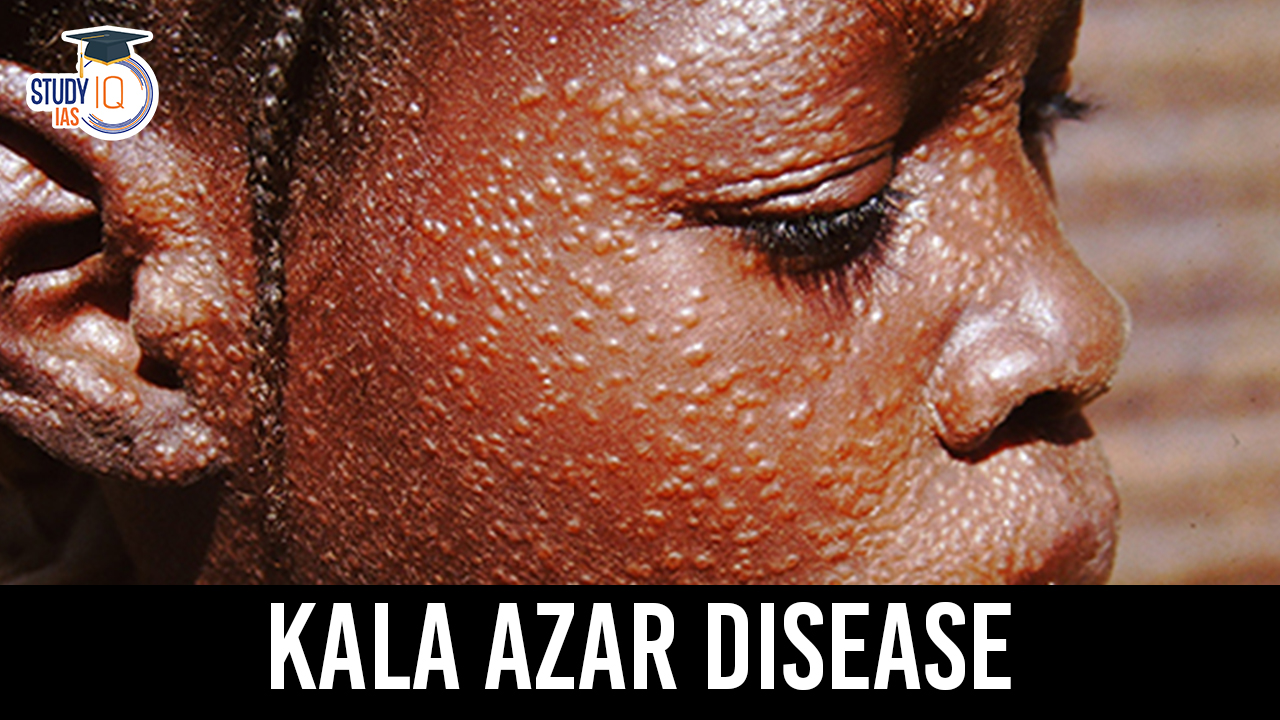Table of Contents
Kala Azar Disease
In a significant stride towards eliminating Kala Azar, India has achieved a remarkable milestone by reporting less than one case per 10,000 population across all its blocks in 2023. This accomplishment marks a pivotal moment in India’s battle against the second deadliest parasitic disease after malaria, demonstrating tangible progress in the country’s public health initiatives.
Kala Azar, also known as visceral leishmaniasis, is a parasitic infection transmitted by sandflies, causing symptoms such as fever, weight loss, and enlargement of the spleen and liver. If left untreated, it can be fatal in 95% of cases. Over the years, India has grappled with this disease, missing multiple deadlines for its elimination. However, the recent data from the National Vector Borne Disease Control Programme signals a turning point in the fight against Kala Azar.
Kala Azar Disease Overview
| Aspect | Description |
| Disease Name | Kala Azar (Visceral Leishmaniasis) |
| Pathogen | Leishmania donovani parasite transmitted by sandflies |
| Symptoms | Fever, weight loss, enlarged spleen and liver, weakness |
| Fatality Rate | Left untreated, fatal in 95% of cases |
| Endemic Regions | Mainly in Bihar, Jharkhand, West Bengal, and Uttar Pradesh states in India |
| Transmission | Bite of infected female sandflies (Phlebotomus argentipes) |
| Diagnosis | Clinical symptoms, serological tests, molecular tests, biopsy |
| Treatment | Miltefosine, Amphotericin B, Sodium stibogluconate |
| Control Measures | Indoor residual spraying, sealing of crevices, vector control, health education |
| Challenges | Resurgence due to PKDL cases, limited access to healthcare in remote areas |
| Global Burden | Estimated 50,000 to 90,000 new cases annually worldwide |
| Eradication Status | India achieved milestone towards elimination in 2023, WHO certification pending |
We’re now on WhatsApp. Click to Join
Global and National Status of Kala-Azar
According to the World Health Organization (WHO), Kala-Azar stands as the second deadliest parasitic disease globally. As of November 2022, approximately 89% of reported global cases originate from eight countries: Brazil, Eritrea, Ethiopia, India, Kenya, Somalia, South Sudan, and Sudan. India, specifically, contributes around 11.5% of the total reported cases of Kala-Azar worldwide.
Within India, the majority of Kala-Azar cases, over 90%, are concentrated in the states of Bihar and Jharkhand. However, there has been notable progress in the states of Uttar Pradesh and West Bengal, where elimination targets at the block level have been achieved. This underscores the varying degrees of success and challenges faced in different regions of the country.
Efforts to combat Kala-Azar continue both globally and within India, with a focus on targeted interventions, improved healthcare infrastructure, and enhanced surveillance to reduce disease burden and achieve elimination goals.
Kala Azar Disease Symptoms
Here are the common symptoms associated with Kala Azar:
- Fever: Persistent fever is one of the hallmark symptoms of Kala Azar. The fever may be intermittent or continuous and is often accompanied by chills and sweating.
- Weight Loss: Patients with Kala Azar typically experience significant weight loss over time. This can occur due to decreased appetite, malabsorption, and metabolic changes associated with the disease.
- Enlarged Spleen (Splenomegaly): One of the characteristic features of Kala Azar is the enlargement of the spleen. This is often palpable on physical examination and may cause abdominal discomfort or pain.
- Enlarged Liver (Hepatomegaly): Along with splenomegaly, hepatomegaly, or enlargement of the liver, is common in individuals with Kala Azar. This can lead to abdominal distension and tenderness.
- Weakness and Fatigue: Patients often experience generalized weakness, fatigue, and lethargy, which can significantly impact their daily activities and quality of life.
- Anemia: Kala Azar can cause hemolytic anemia, characterized by a reduction in red blood cell count and hemoglobin levels. Anemia may contribute to fatigue, weakness, and pallor.
- Skin Changes: In some cases, skin manifestations such as rashes, lesions, or discoloration may occur. These changes are more commonly associated with Post Kala-azar Dermal Leishmaniasis (PKDL), a complication that can develop after successful treatment of visceral leishmaniasis.
- Lymphadenopathy: Swollen lymph nodes (lymphadenopathy) may occur in some individuals, particularly in regions where the disease is endemic.
Kala Azar Treatment
- Antimonial Drugs: Sodium stibogluconate and meglumine antimoniate are mainstays for decades, administered intravenously or intramuscularly.
- Amphotericin B: Liposomal amphotericin B is the first-line treatment for severe cases, given intravenously.
- Miltefosine: Oral medication, particularly useful where intravenous access is limited.
- Paromomycin: Administered intramuscularly, often in combination with other drugs.
- Combination Therapy: Utilized for enhanced efficacy and to reduce drug resistance risk.
- Supportive Care: Fluid/electrolyte replacement, nutritional support, and anemia management may be necessary.
- Follow-up Monitoring: Regular checks post-treatment for relapse or complications.
Global and Indian Initiative For Kala Azar
Global
- WHO’s New Roadmap (2021–2030): Aims to prevent, control, eliminate, and eradicate 20 neglected tropical diseases by 2030.
- Global Programme to Eliminate Lymphatic Filariasis (GPELF): Established by WHO to eliminate lymphatic filariasis, onchocerciasis, and Kala-azar through Mass Drug Administration (MDA). Despite setbacks due to COVID-19, WHO aims to achieve this target by 2030.
Indian
- Government Initiatives: Central government initiatives include building pucca houses under the PM-AWAS Yojana, rural electrification, and periodic high-level reviews to eliminate Kala-azar by 2023.
- Support for States: The Centre supports states in active case detection, surveillance, treatment, and supplies of diagnostic kits, medicines, and sprays.
- National Kala-azar Elimination Programme: Launched to eliminate Kala-azar, aligned with the National Health Policy 2002 goal, initially set for 2010, later revised to 2015.
- Tripartite MoU: India signed a MoU with Bangladesh and Nepal to achieve Kala-azar elimination in the South-East Asia Region.
- Implementation: All program activities are executed through the National Vector Borne Disease Control Programme (NVBDCP) under the National Health Mission (NHM).


 World Autism Awareness Day 2025, Theme, ...
World Autism Awareness Day 2025, Theme, ...
 International Days List of 2025, Importa...
International Days List of 2025, Importa...
 Asia’s Largest Tulip Garden
Asia’s Largest Tulip Garden





















